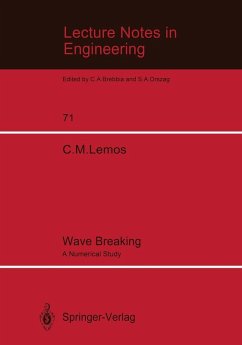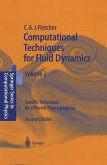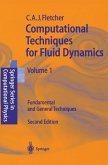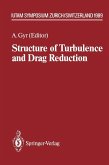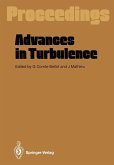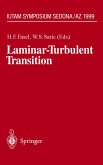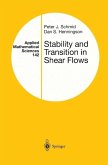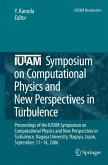73,95 €
73,95 €
inkl. MwSt.
Sofort per Download lieferbar

37 °P sammeln
73,95 €
Als Download kaufen

73,95 €
inkl. MwSt.
Sofort per Download lieferbar

37 °P sammeln
Jetzt verschenken
Alle Infos zum eBook verschenken
73,95 €
inkl. MwSt.
Sofort per Download lieferbar
Alle Infos zum eBook verschenken

37 °P sammeln
- Format: PDF
- Merkliste
- Auf die Merkliste
- Bewerten Bewerten
- Teilen
- Produkt teilen
- Produkterinnerung
- Produkterinnerung

Bitte loggen Sie sich zunächst in Ihr Kundenkonto ein oder registrieren Sie sich bei
bücher.de, um das eBook-Abo tolino select nutzen zu können.
Hier können Sie sich einloggen
Hier können Sie sich einloggen
Sie sind bereits eingeloggt. Klicken Sie auf 2. tolino select Abo, um fortzufahren.

Bitte loggen Sie sich zunächst in Ihr Kundenkonto ein oder registrieren Sie sich bei bücher.de, um das eBook-Abo tolino select nutzen zu können.
- Geräte: PC
- ohne Kopierschutz
- eBook Hilfe
- Größe: 13.05MB
Andere Kunden interessierten sich auch für
![Computational Techniques for Fluid Dynamics 2 (eBook, PDF) Computational Techniques for Fluid Dynamics 2 (eBook, PDF)]() Clive A. J. FletcherComputational Techniques for Fluid Dynamics 2 (eBook, PDF)69,95 €
Clive A. J. FletcherComputational Techniques for Fluid Dynamics 2 (eBook, PDF)69,95 €![Computational Techniques for Fluid Dynamics 1 (eBook, PDF) Computational Techniques for Fluid Dynamics 1 (eBook, PDF)]() Clive A. J. FletcherComputational Techniques for Fluid Dynamics 1 (eBook, PDF)61,95 €
Clive A. J. FletcherComputational Techniques for Fluid Dynamics 1 (eBook, PDF)61,95 €![Structure of Turbulence and Drag Reduction (eBook, PDF) Structure of Turbulence and Drag Reduction (eBook, PDF)]() Structure of Turbulence and Drag Reduction (eBook, PDF)40,95 €
Structure of Turbulence and Drag Reduction (eBook, PDF)40,95 €![Advances in Turbulence (eBook, PDF) Advances in Turbulence (eBook, PDF)]() Advances in Turbulence (eBook, PDF)73,95 €
Advances in Turbulence (eBook, PDF)73,95 €![Laminar-Turbulent Transition (eBook, PDF) Laminar-Turbulent Transition (eBook, PDF)]() Laminar-Turbulent Transition (eBook, PDF)233,95 €
Laminar-Turbulent Transition (eBook, PDF)233,95 €![Stability and Transition in Shear Flows (eBook, PDF) Stability and Transition in Shear Flows (eBook, PDF)]() Peter J. SchmidStability and Transition in Shear Flows (eBook, PDF)169,95 €
Peter J. SchmidStability and Transition in Shear Flows (eBook, PDF)169,95 €![IUTAM Symposium on Computational Physics and New Perspectives in Turbulence (eBook, PDF) IUTAM Symposium on Computational Physics and New Perspectives in Turbulence (eBook, PDF)]() IUTAM Symposium on Computational Physics and New Perspectives in Turbulence (eBook, PDF)113,95 €
IUTAM Symposium on Computational Physics and New Perspectives in Turbulence (eBook, PDF)113,95 €-
-
-
Produktdetails
- Verlag: Springer Berlin Heidelberg
- Seitenzahl: 196
- Erscheinungstermin: 13. März 2013
- Englisch
- ISBN-13: 9783642846885
- Artikelnr.: 53387026
Dieser Download kann aus rechtlichen Gründen nur mit Rechnungsadresse in A, B, BG, CY, CZ, D, DK, EW, E, FIN, F, GR, HR, H, IRL, I, LT, L, LR, M, NL, PL, P, R, S, SLO, SK ausgeliefert werden.
- Herstellerkennzeichnung Die Herstellerinformationen sind derzeit nicht verfügbar.
1: Introduction.- 1.1 Nature and scope of the work.- 1.2 Methodology.- 1.3 Innovations and conclusions.- 2: General aspects of incompressible flow. Theoretical review.- 2.1 Introduction.- 2.2 The Navier-Stokes equations for uniform, incompressible fluids.- 2.3 Initial and boundary conditions.- 2.4 The energy equation.- 2.5 The vorticity equation.- 2.6 The pressure Poisson equation for incompressible flows.- 2.7 General aspects of turbulent flows. Averaging methods and Reynolds equations.- 2.8 Turbulence transport equations.- 2.9 Turbulence models.- 2.10 Boundary conditions for K and ?.- 3: Mathematical modeling of breaking shallow water waves. Proposed methodology.- 3.1 Introduction.- 3.2 Physical processes.- 3.3 Mathematical descriptions.- 3.4 Wave theories for very shallow water.- 3.5 Summary of experimental investigations.- 3.6 Description of the proposed methodology.- 4: MAC-type methods for incompressible free-surface flows.- 4.1 Introduction.- 4.2 The choice of the mesh.- 4.3 The MAC (Marker-And-Cell) method.- 4.4 The projection method.- 4.5 The SMAC (Simplified-Marker-And-Cell) method.- 4.6 The pressure-velocity iteration method.- 4.7 Numerical treatment of free-surfaces.- 4.8 Stability considerations.- 4.9 Conclusions.- 5: Description of the numerical model.- 5.1 Introduction.- 5.2 Momentum equation approximations.- 5.3 Continuity equation approximation.- 5.4 Approximations for the K and ? equations.- 5.5 Updating the fluid configuration.- 5.6 Velocity boundary conditions.- 5.7 Boundary conditions for the K and ? equations.- 5.8 Initial conditions for the K and ? equations.- 5.9 Stability considerations.- 5.10 Programming considerations.- 5.11 Selected test problems.- 6: Numerical simulation of shallow water waves.- 6.1 Introduction.- 6.2 Propagation ofa solitary wave over a horizontal bottom.- 6.3 Collision between solitary waves.- 6.4 Simulation of undular, transitional and turbulent hydraulic jumps.- 6.5 Breaking of a solitary wave over a slope.- 6.6 Breaking of a train of solitary waves over a slope.- 7: Conclusions. Future research and development.- 7.1 Summary and conclusions.- 7.2 Future research and development.- References.
1: Introduction.- 1.1 Nature and scope of the work.- 1.2 Methodology.- 1.3 Innovations and conclusions.- 2: General aspects of incompressible flow. Theoretical review.- 2.1 Introduction.- 2.2 The Navier-Stokes equations for uniform, incompressible fluids.- 2.3 Initial and boundary conditions.- 2.4 The energy equation.- 2.5 The vorticity equation.- 2.6 The pressure Poisson equation for incompressible flows.- 2.7 General aspects of turbulent flows. Averaging methods and Reynolds equations.- 2.8 Turbulence transport equations.- 2.9 Turbulence models.- 2.10 Boundary conditions for K and ?.- 3: Mathematical modeling of breaking shallow water waves. Proposed methodology.- 3.1 Introduction.- 3.2 Physical processes.- 3.3 Mathematical descriptions.- 3.4 Wave theories for very shallow water.- 3.5 Summary of experimental investigations.- 3.6 Description of the proposed methodology.- 4: MAC-type methods for incompressible free-surface flows.- 4.1 Introduction.- 4.2 The choice of the mesh.- 4.3 The MAC (Marker-And-Cell) method.- 4.4 The projection method.- 4.5 The SMAC (Simplified-Marker-And-Cell) method.- 4.6 The pressure-velocity iteration method.- 4.7 Numerical treatment of free-surfaces.- 4.8 Stability considerations.- 4.9 Conclusions.- 5: Description of the numerical model.- 5.1 Introduction.- 5.2 Momentum equation approximations.- 5.3 Continuity equation approximation.- 5.4 Approximations for the K and ? equations.- 5.5 Updating the fluid configuration.- 5.6 Velocity boundary conditions.- 5.7 Boundary conditions for the K and ? equations.- 5.8 Initial conditions for the K and ? equations.- 5.9 Stability considerations.- 5.10 Programming considerations.- 5.11 Selected test problems.- 6: Numerical simulation of shallow water waves.- 6.1 Introduction.- 6.2 Propagation ofa solitary wave over a horizontal bottom.- 6.3 Collision between solitary waves.- 6.4 Simulation of undular, transitional and turbulent hydraulic jumps.- 6.5 Breaking of a solitary wave over a slope.- 6.6 Breaking of a train of solitary waves over a slope.- 7: Conclusions. Future research and development.- 7.1 Summary and conclusions.- 7.2 Future research and development.- References.
